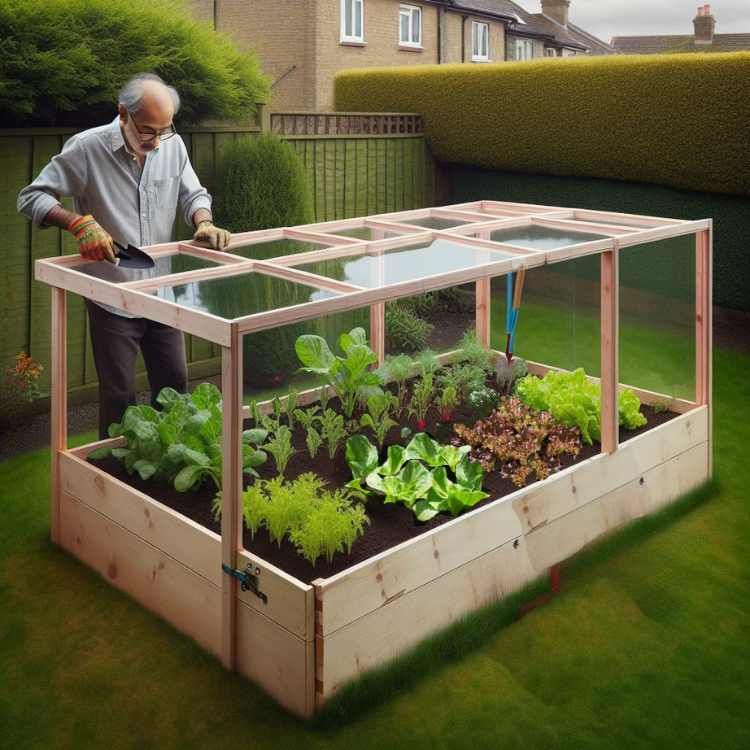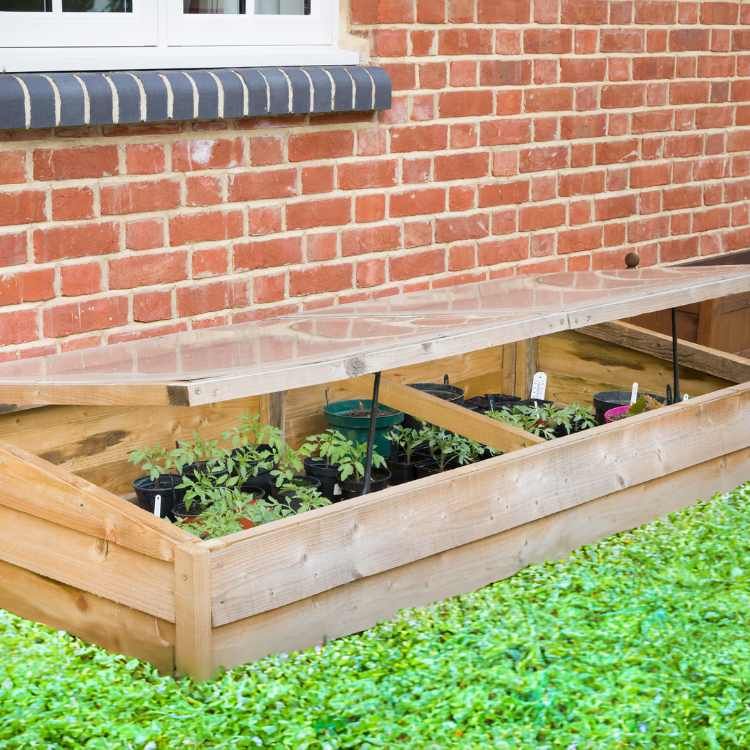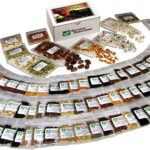
Article-at-a-Glance
Cold frames extend the growing season by protecting plants from frost.
Building a cold frame is straightforward and can be done using various materials.
Placement and size of cold frames are crucial for maximizing their effectiveness.
Timing and temperature management are key factors for successful cold frame gardening.
Choosing the right plants and understanding their care requirements will ensure a bountiful harvest.
Why Cold Frames are a Game-Changer for Gardeners
Gardening doesn’t have to end when the first frost hits. Cold frames, essentially mini-greenhouses, offer a simple yet revolutionary way to extend your growing season. Imagine biting into a crisp leaf of lettuce or plucking fresh herbs right from your garden in the chill of winter. Cold frames make this dream a reality by creating a cozy microclimate for your plants. They’re perfect for gardeners looking to get a jump on spring planting or to keep the harvest going well into the cooler months.
The Basics of Cold Frame Construction
Building a cold frame is a fun weekend project that pays off all year round. At its core, a cold frame is just a box with a transparent lid. The box can be made of wood, bricks, or even bales of straw. The lid, often angled towards the sun, is typically glass or clear plastic, which lets in light and traps warmth. Here’s the gist of it:
Choose a south-facing spot that gets plenty of sunlight.
Build or repurpose a box frame that can withstand the elements.
Top it with an old window or a clear polycarbonate sheet.
Ensure the lid can be propped open for ventilation on warm days.
Remember, the goal is to shield your plants from the cold, not to build a fortress. Keep it simple, and you’ll reap the benefits without much hassle.
Choosing the Right Cold Frame for Your Garden
Materials Matter: Pros and Cons
When it comes to cold frames, what they’re made of matters. Wood is sturdy and traditional, but can rot over time. Recycled plastic lumber or composite materials offer longevity but may cost more upfront. Aluminum frames are lightweight and rust-resistant, a good choice if you’ll be moving the cold frame around. Glass lids provide excellent clarity and heat retention, whereas polycarbonate is less fragile and insulates well. Let’s break it down:
Material | Pros | Cons |
|---|---|---|
Wood | Natural look, sturdy | Can rot, heavier |
Plastic/Composite | Long-lasting, low maintenance | More expensive, less traditional |
Aluminum | Lightweight, rust-resistant | May not hold heat as well |
Glass | Clear, good heat retention | Fragile, dangerous if broken |
Polycarbonate | Insulating, less breakable | Can yellow over time |
Size and Placement: Maximizing Efficiency
The size of your cold frame depends on what you want to grow and how much space you have. Smaller frames are easier to heat and manage, but larger ones can house more plants. Placement is critical – choose a spot that gets maximum sunlight, ideally facing south. A location against a building or wall can provide additional warmth and shelter. Most importantly, ensure the spot has good drainage to prevent water buildup.
Here’s a quick tip: tilt the lid of your cold frame towards the sun. This angle captures more light and warmth, especially during the shorter days of winter.
Mastering Cold Frame Gardening
With a little know-how, you can turn a cold frame into a year-round vegetable factory. Mastering cold frame gardening is all about understanding the microclimate you’re creating and managing it to benefit your plants. It’s a balance of art and science, where you become the guardian of a miniature ecosystem.
Timing Your Planting for Success
Timing is everything when it comes to cold frame gardening. Start too early, and your seedlings might be nipped by a late frost; too late, and they won’t benefit from the extended season. As a rule of thumb, begin hardy plants like kale and spinach a few weeks before the last frost date. For more tender plants, wait until the threat of frost has passed. Remember, a cold frame can also be used to harden off seedlings you started indoors, gradually exposing them to the outside temperatures and conditions.
Managing Temperature and Moisture
Keeping an eye on the temperature inside your cold frame is crucial. On sunny days, even in winter, the temperature can soar, potentially harming your plants. Ventilation is key; prop open the lid on warm days to prevent cooking your crops. Conversely, on chilly nights, ensure the frame is well-sealed to retain heat. Moisture control is just as important. Water sparingly, as the cold frame environment is less prone to evaporation than the open air. Overwatering can lead to disease and poor plant health.
Nurturing Plants in Cold Frames
Cold frames are the ideal nursery for young plants. They provide a gentle transition from the cozy indoors to the harsher outdoor environment. By nurturing your plants in a cold frame, you’re giving them the best possible start in life.
When it comes to transplanting, do it on a cloudy day or late in the afternoon to minimize shock. Make sure the soil in the cold frame is rich and well-draining to give your plants a nutrient-packed home.
Example: Last year, I started my heirloom tomatoes in the cold frame. By the time the summer heat came around, they were already robust and ready for transplanting. The head start resulted in the best tomato harvest I’ve ever had!
Best Plants for a Cold Frame Environment
Not all plants are suited for cold frame life. The best candidates are those that can tolerate cooler temperatures and less direct sunlight. Here’s a list of some top performers:
Leafy greens like spinach, kale, and lettuce
Root vegetables such as carrots, radishes, and beets
Cold-tolerant herbs like parsley, chives, and cilantro
Hardy flowers such as pansies and snapdragons
These plants not only thrive in a cold frame but can also provide a nutritious boost to your winter diet.
Caring for Seedlings and Transplants
Seedlings and transplants are like infants; they need consistent care. Monitor your cold frame daily for temperature fluctuations, and adjust the lid as needed to provide adequate ventilation. Water the plants at the base to avoid wetting the leaves, which can lead to fungal diseases. And be vigilant about pests; even in a cold frame, bugs can find their way in and wreak havoc on your tender plants. Learn more about how to prevent damping-off in seedlings to ensure the health and longevity of your garden.
Seasonal Tips for Cold Frame Gardening

As the seasons change, so should your cold frame strategy. Here’s how to make the most of each season:
Spring Awakening: Prepping Your Cold Frame
In early spring, clean your cold frame thoroughly to prepare for the new growing season. Remove any plant debris and disinfect the interior to prevent disease. As the days warm, start acclimating your seedlings by opening the lid for short periods each day. This process, known as hardening off, is essential for building strong, resilient plants.
Summer to Fall Transitioning
As summer wanes, it’s time to transition your cold frame for fall. This means swapping out heat-loving summer crops for cool-season varieties. Start sowing seeds for fall harvest about 6 to 8 weeks before the first expected frost. Plants like spinach, kale, and collards will thrive in the cooling temperatures. It’s also a good time to apply a fresh layer of mulch to help insulate the soil as the weather cools.
Keep an eye on the weather forecast; if an early frost threatens, be ready to close your cold frame to protect your plants. And as the days grow shorter, consider the light needs of your crops. You may need to remove any shading devices you used to protect plants from the harsh summer sun.
Frequently Asked Questions
As a gardener, you’re bound to have questions about using cold frames effectively. Here are some common queries and their answers to help you get the most out of your cold frame gardening experience.
Can a Cold Frame Replace a Greenhouse?
While cold frames and greenhouses share similar functions, they aren’t quite interchangeable. Cold frames are smaller, simpler structures designed for ground-level gardening. They work best for hardening off seedlings, extending the growing season for cold-tolerant plants, and overwintering crops. Greenhouses, on the other hand, are larger, more permanent structures that can house a wider variety of plants and provide more control over the growing environment. For small-scale gardeners or those with limited space, a cold frame is a cost-effective alternative to a greenhouse.
How to Manage Overheating in Cold Frames?
Overheating can be a real issue in cold frames, especially during unexpected warm spells. To prevent this, proper ventilation is key. Here’s how you can manage it: Consider metal vs. wood garden beds for superior heat retainment, which can help regulate temperature and prevent overheating.
Prop open the lid during the day to allow excess heat to escape.
Install automatic vent openers that respond to temperature changes.
Monitor the internal temperature regularly and adjust the lid accordingly.
Use shade cloth to protect plants from intense midday sun if necessary.
Remember, the goal is to maintain a stable environment for your plants, not to cook them!
What Are the Most Cost-effective Materials for Building a Cold Frame?
Cost-effectiveness is important when building a cold frame. Here are some materials that strike a balance between affordability and durability:
Untreated wood, such as cedar or redwood, is durable and relatively inexpensive.
Reclaimed windows or polycarbonate sheets can serve as a low-cost lid.
Bricks or cinder blocks can be used for the sides and are often available for free or at a low cost.
Always consider the longevity of the materials versus the initial cost. Sometimes spending a bit more upfront can save you money in the long run.
How to Ensure Proper Ventilation?
Proper ventilation is crucial to prevent overheating and to provide fresh air for your plants. Here’s what you can do: learn more about sustainable gardening practices.
Install a hinged lid that can be propped open at varying degrees.
Use spacers to create a small gap for airflow when the lid is closed.
Consider adding side vents or a fan for additional air circulation.
Good ventilation will help regulate temperature and humidity, keeping your plants healthy.
Is It Possible to Automate a Cold Frame?
Yes, automating your cold frame is not only possible but can make your gardening life much easier. Automatic vent openers are a game-changer; they use a wax cylinder that expands and contracts with temperature changes, opening and closing the lid without electricity. For watering, drip irrigation systems can be set on timers to ensure consistent moisture. If you’re tech-savvy, you can even install sensors to monitor temperature and humidity and control vents and watering systems via a smartphone app.







Leave a Reply